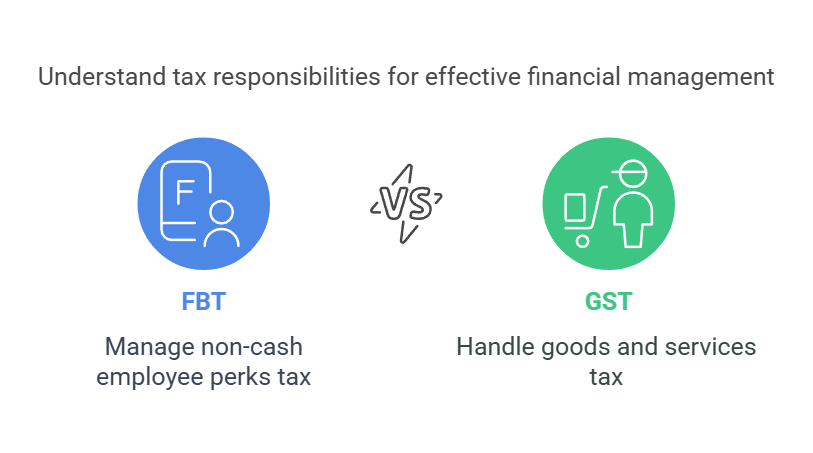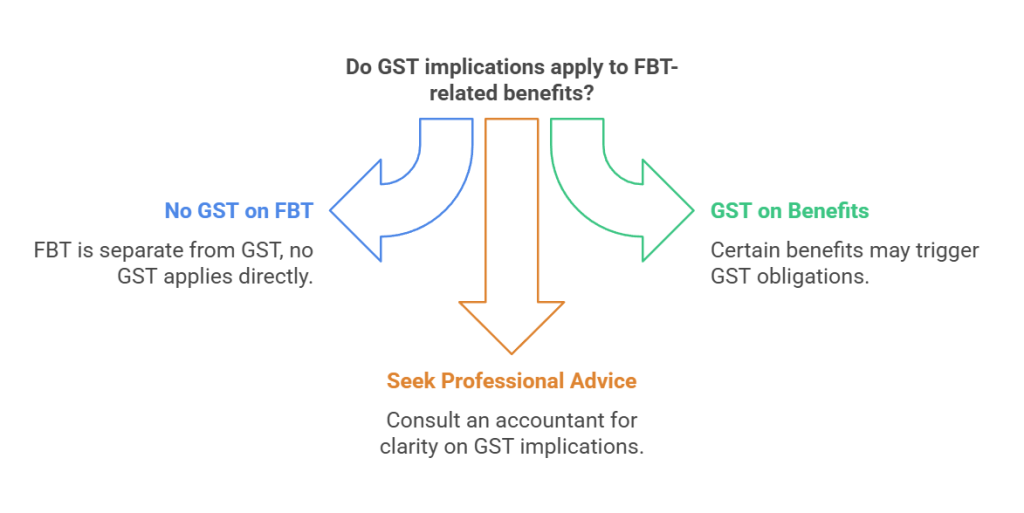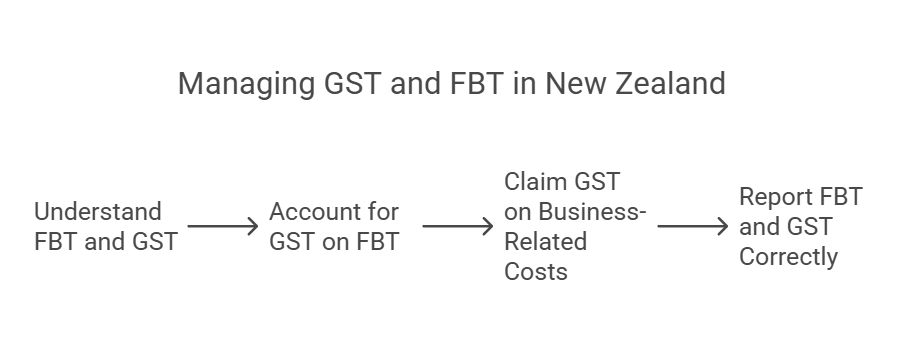I’m sure you’ve heard of Fringe Benefit Tax (FBT) and Goods and Services Tax (GST) – two of the most common taxes businesses deal with. But what’s the difference, and how does it all work? You might be wondering if GST is payable on FBT or which benefits are exempt from these taxes. Trust me, you’re not the only one getting a bit confused here. The rules around FBT, GST, and how they interconnect can feel like trying to solve a puzzle. Don’t worry, we’ve got you covered with everything you need to know to stay compliant and avoid those pesky tax mistakes.
What is FBT and GST?
Okay, let’s break this down without all the tax jargon. FBT (Fringe Benefit Tax) is what businesses pay when they give their employees non-cash perks – things like company cars, discounted goods, or even the occasional lunch. Basically, if your company gives a benefit that’s not part of your paycheck, FBT comes into play.
GST (Goods and Services Tax), on the other hand, is the 15% tax that gets slapped on most goods and services you buy or sell in New Zealand. If you run a business, you need to charge GST on your sales and pay it on what you buy. It’s pretty straightforward, but where it gets tricky is figuring out when and how these two taxes overlap.
For employers, this means you’ve got to track FBT on employee perks and keep your GST in check for your business transactions. For employees, it’s more about understanding what perks you’re getting and how they’re taxed – trust me, it’s easier than it sounds, but you’ll want to stay on top of it to avoid surprises.

Do You Have to Pay GST on FBT?
Here’s the million-dollar question: Do you have to pay GST on FBT? The simple answer is no, but let’s dive into the nitty-gritty because this is where things tend to get a little blurry for a lot of people.
- FBT itself doesn’t include GST: FBT is a separate tax from GST, so you don’t pay GST on the FBT itself. But wait, there’s more…
- Certain benefits could trigger GST: While FBT doesn’t attract GST, some employee benefits (like company vehicles or discounted goods) could still have GST implications. It’s all about the details.
- Common mistake: Thinking GST is automatically applicable: One of the biggest mistakes people make is assuming that because there’s FBT involved, GST is too. Nope! They’re separate beasts. You only need to worry about GST if the benefit is subject to GST in the first place.
- Get professional advice if in doubt: If you’re unsure whether GST applies to certain benefits, it’s always worth checking with an accountant or tax expert.

Exemptions from FBT in New Zealand
Let’s talk about the good stuff – the perks that get you off the hook when it comes to paying FBT. While FBT covers a lot of employee benefits, there are some exemptions that make life a bit easier. These are the exceptions that can save your business from extra tax headaches.
Exempt Benefits
When it comes to exemptions, there are a few main ones you should be aware of. Small gifts, for instance, are typically exempt from FBT as long as they stay under the $300 threshold. This means if you send your employee a birthday gift or a bottle of wine, you’re generally in the clear.
Non-cash benefits also often fall under exemptions, but not all of them. For example, meals and low-value items can sometimes be exempt, but it depends on the specifics of the benefit. Work-related items, like laptops or phones, may also be exempt from FBT, provided they’re genuinely used for business purposes and not just as a perk.
Section 57A
Now, let’s dive into Section 57A, because this one’s a bit of a game-changer. This section is all about exempting certain benefits from FBT, and it can be a real lifesaver for businesses that provide specific employee perks. Section 57A covers exemptions for things like transportation, low-value goods, and minor employee benefits. But just because something seems exempt doesn’t mean it’s automatically clear-cut. You’ll need to be familiar with the specific conditions that apply under this section to ensure you’re staying compliant.
And there you have it – the perks that won’t cost you extra tax. But keep an eye on the details, because these exemptions do come with their own set of rules.
How to Correctly Claim GST on FBT in Your Business
Claiming GST on FBT (Fringe Benefit Tax) sounds like one of those things that’s easy to mess up, right? But don’t worry, it’s actually pretty straightforward once you know what you’re doing. Here’s a quick guide to help you avoid the common pitfalls and keep your reporting in check.
Steps to Get it Right:
- Know the Difference: FBT is the tax on perks you give to your employees, like cars or phones. GST, on the other hand, is the tax on your goods and services. Both are related but not the same.
- Ensure GST on FBT is Accounted For: When you’re providing a fringe benefit, you can claim GST on the cost of the benefit (like GST on the car you provide). But make sure you’re only claiming GST on the portion that’s business-related.
- Report Properly: Always include your FBT and GST in the right sections of your tax returns. It’s easy to mix them up, but the IRD will notice!

Here’s a quick table to make sure you’re doing it right:
| Step | What to Do | Common Pitfall |
|---|---|---|
| Understand FBT & GST | Know they’re different taxes | Confusing the two and claiming wrong |
| Account for GST on FBT | Claim GST only on the business portion of benefits | Forgetting to exclude private use |
| Report Correctly | File FBT in the right section of your return | Mixing FBT and GST amounts in the wrong place |
Final Tip:
Stay on top of it. Keep track of FBT and GST separately and always double-check your returns. It might seem like a lot, but once you get the hang of it, it’ll save you a headache (and some cash) in the long run!
What to Do Next
So, there you have it – FBT and GST, the connection, the exemptions, and the common mistakes to avoid. It might seem like a lot to digest, but trust me, once you get the hang of it, navigating these taxes becomes a whole lot easier. The key is to stay on top of the details and ensure you’re not overpaying or underreporting.
Now, what should you do next? If any of this feels a bit overwhelming, or if you’re unsure about your FBT and GST filings, don’t sweat it. At BH Accounting, we’ve got a team of tax experts ready to help you navigate the tricky bits and make sure you’re compliant with all the tax regulations.
Need assistance? Get in touch with BH Accounting today to find the best tax professionals for your business and ensure your FBT/GST filings are spot-on. We’re here to help!
